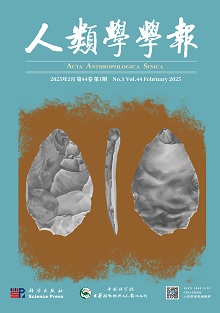Distribution, status and conservation of black-crested gibbon (hylobates concolor) in China
Wang Yingxiang, Jiang Xuelong, Feng Qing
2000, 19(02):
138-147.
 Asbtract
(
329 )
Asbtract
(
329 )
 PDF (275KB)
(
157
)
Related Articles |
Metrics
PDF (275KB)
(
157
)
Related Articles |
Metrics
Black-crested gibbon ( Hylobates concolor) , an earliest distinct taxon in phylogeny and a more endangered species among 11 extant species o f gibbon, is now mainly distributed in South of China and North of Vietnam. Althouth its historic distribution was widely extended to Taiwan, Fujian in the East, to Yunnan in the west, to Qinling in the North and to the Island Hainan in Southeastern and Southern China, they are now only found in Hainan Island, south and middle of Yunnan, China and northern Vietnam, the total distribution area is less than 1 000 km2 . This species totaled about 1 000 individuals. Taxonomically , extant black gibbons can be divided into six subspecies, five of them distribute in China. ( 1) H. c. hainanus distributed in 12 counties to the south of " Nada- Tunchang-Qio nghai", Hainan Island with no less than 2000 individuals before 1950s, but in 1980s only about 15 individuals of 4 groups live in Bawanlin Nature Reserve, it is the most endangered subspecies in concolor gibbon; ( 2) H. c. nasutus was discovered in southwest of Guangxi in 1950s, but disappeared in 1960s- 1970s, the living animals could be found in northeastern Vietnam, and are estimated less than 50 individuals; ( 3) H. c. concolor, this subspecies is mainly distributed in Northern Vietnam and south Yunnan, it was once widely distributed in south and southeast Yunnan, now its distribution is restricted to Luchun, Jinping , Hekou and Pingbian in South Yunnan with about 100 individuals and to North Vietnam ( probably no mo re than 50 animals) , and M t. Ailao, middle part of Yunnan ( about 180- 240 individuals belonging to 40- 60 groups); ( 4) H. c. jingdongensis, it is only distributed in M t. Wuliang , middle of Yunnan, and it is estimated to include about 300- 400 animals ; ( 5) H. c. furvogaster, it is only found in Chang yuan, Zheng kang, Yunxian and Gengma, southwest of Yunnan, and about 30- 50 animals belonging to 10- 15 groups are left. So far, black gibbons in China are protected in 9 nature reserves, among which Bawanglin Nature Reserve and Wuliang Nature Reserve are national and provincial reserves respectively and aim at mainly to protect black gibbons. After more than ten years protection and management, the shrinkage of distribution area and decrease in number of this animal have been stopped, and the status is maintained in the level of middle 1980s.









